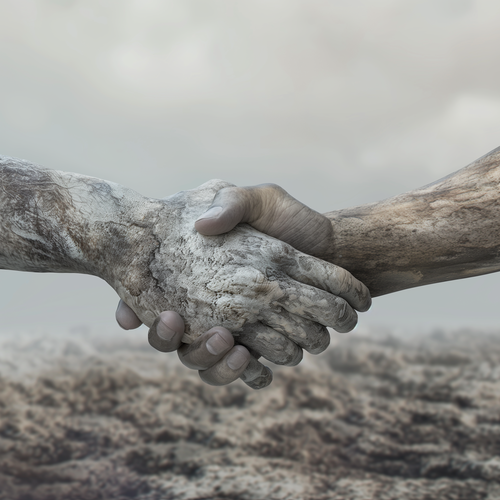Dive into "Reconciliation in Canada: A Model?", a key Learning and Evaluation Situation (LES) from the new Quebec Culture and Citizenship (QCC) program for Secondary 5.
This innovative LES, designed for the Social Groups and Power Relations segment, invites students to deeply explore issues of reconciliation, equality, and social inclusion in Canada, through the lens of the relationships between Indigenous and non-Indigenous peoples.
This LES proposes a pedagogical approach that encourages critical judgment by exploring egalitarian public policies and reconciliation efforts. From the start, "What Do We Mean by Reconciliation?", students are invited to debate this crucial concept, laying the groundwork for an engaging reflection on coexistence and mutual respect.
The first task, "From 1876 to Today", leads students to analyze and catalog initiatives undertaken by various actors to advance towards a fairer society regarding Indigenous realities. This historical and critical task highlights the progress made and the ongoing challenges in reconciliation and inclusion.
In the task "Learning About Turtle Island", students create a questionnaire intended for an Indigenous community or association, promoting a direct and personal understanding of Indigenous perspectives. "Synthesizing My Knowledge" allows for consolidating learning by writing an article enriched by the responses obtained, emphasizing the value of Indigenous knowledge and voices.
The final task, a "Comparative Presentation", offers a critical analysis of Canada's reconciliation efforts compared to policies from other countries, inviting students to evaluate different approaches and their effectiveness.
"Reconciliation in Canada: A Model?" represents a unique opportunity for Secondary 5 students to immerse themselves in the essential questions of our time, preparing them to become informed, empathetic, and active citizens in building an inclusive and reconciled future.
- Internal code: CCQ_2024_S5_Groupes_SAE4
- Format: Digital Package
- Dokoma Editions
- Culture et citoyenneté québécoise
- Secondary 5
Présentation, mode d'emploi et lettre pour les parents
| Titre |
|---|
ressource Présentation de la thématique «Groupes sociaux et rapports de pouvoir» |
ressource Mode d'emploi : Bien commencer en préparant son compte |
ressource Mode d'emploi : Gestion des classes |
ressource Mode d'emploi : Bibliothèque numérique |
ressource Mode d'emploi : Gestion de l'apprentissage et de l'enseignement |
ressource Mode d'emploi : Débat |
ressource Lettre pour les parents |
Guide pédagogique | Réservé à l'enseignement
| Titre |
|---|
ressource Liens au programme |
ressource Planification |
ressource Guide pour la SAÉ 4 | La réconciliation au Canada : un modèle? |
ressource Grilles d'évaluation |
ressource Cahier de l'élève à télécharger au complet |
Cahier de l'élève
| Titre |
|---|
section Couverture | crédits |
section Amorce | Qu’est-ce qu’on appelle la réconciliation ? |
section Tâche 1 | De 1876 à aujourd’hui |
section Tâche 2 | S’informer sur l’île de la Tortue |
section Tâche 3 | Synthèse de mes connaissances |
section Tâche finale | Présentation comparative |
section Couverture de fin |
section Cahier de l'élève à télécharger au complet |
Ressources numériques pour réaliser l'amorce | Qu'est-ce qu'on appelle la réconciliation?
| Titre |
|---|
ressource Vidéo sur la réconciliation |
ressource Ligne du temps sur le processus de réconciliation |
Ressources numériques pour réaliser la tâche 1 | De 1876 à aujourd'hui
| Titre |
|---|
ressource Qu’est-ce que la loi sur les Indiens? |
ressource Loi des indiens : Mary Two-Axe Earley |
ressource Entrevues sur la réconciliation |
ressource Vérité et réconciliation, appel à l’action |
Ressources numériques pour réaliser la tâche 2 | S'informer sur l'île de la Tortue
| Titre |
|---|
ressource Mener une entrevue |
ressource Liste d’associations autochtones |
Ressources numériques pour réaliser la tâche 3 | Synthèse de mes connaissances
| Titre |
|---|
ressource Présentation du vox pop autochtone |
ressource Vox pop : Dan Alexandre |
ressource Vox pop : Denis Volant |
ressource Vox pop : Heidi Vachon |
ressource Vox pop : Lauréat Moreau |
ressource Vox pop : Ntshukus Vollant |
Ressources numériques pour réaliser la tâche finale | Présentation comparative
| Titre |
|---|
ressource La banque de lien avec d’autres politiques de réconciliation avec des peuples autochtones |
Outils pour le dialogue
| Titre |
|---|
Revue de presse | Le meilleur de la presse en lien avec ce volet
| Titre |
|---|
revue la presse 2024 |
